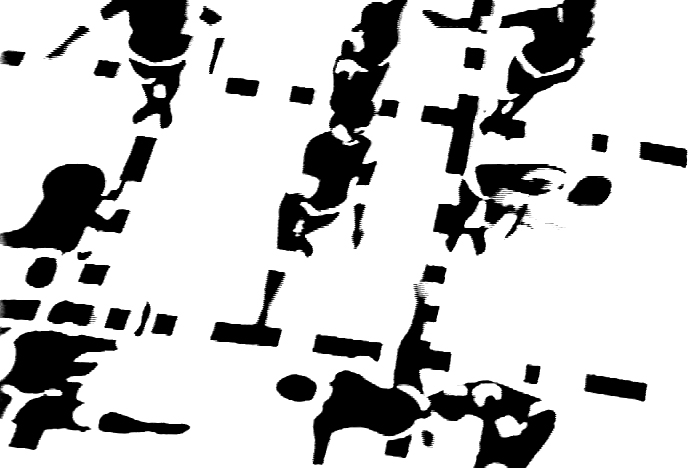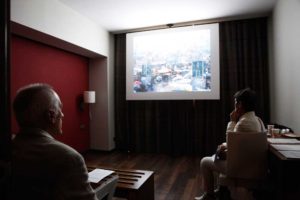
— Log in to watch the artist video if you have been given an access
- Artist
- Analívia Cordeiro
- Title
- M3x3
- Year
- 1973
- Duration
- 9 min 54 s
- Format & Technical
Single channel, video transferred to DVD, black and white, sound
8 + 2 AP
It is impossible to begin a text on this work by Brazilian artist Analívia Cordeiro without highlighting its historic status: it is considered the first video art work in her country, as well as the first computer dance. Yet perhaps even more important is the circumstance that concerns many of the pioneers of the sixties and seventies, which is the continuity today of their technological, conceptual, and methodological work and research. The nostalgia for and seduction of a particular material, now fetishised for its vintage feel, frequently overlooks updated knowledge concerning the works of these artists.
In Cordeiro’s case, it is the response to what you could call an outlook on life: the search for new perceptive forms, and therefore cognitive ones, supported by the use of state-of-the-art technology of its time for its increased distribution in society and reflection —Analívia is the daughter of another pioneer in art, computation, and socially-oriented works based on architecture and aesthetics, Waldemar Cordeiro. This leitmotif is found in this video, but also in her online programmes for the study of body consciousness, DuCorpo (meaning “related to the body” in Portuguese), and alegriadeler (“joy of reading”) to learn to read and write in Portuguese. We first encounter this interest in the union of perception and technology in her work in the field of dance and performance, and in two of the software programmes that she developed. Completed between 1980 and 1994 in collaboration with Nilton Lobo, Nota-Anna was the precursor of computerized human movement notation systems. This system enabled the codification of the movements of performers on a screen in order to be able to read, research, reconstruct any of them, and even compose new sequences or choreography. These first experiments are the ones we see in M3x3. Thirteen years later, in 2007, Analívia Cordeiro presented Unsquare Dance, a work associated with the new X-Motion programme, which processes the relationships among mass, force and movement in real time. To be able to do this, the activity of each dancer (whose joints are marked with reflective paint) is captured with an infrared camera, which converts these joints into different points of light.
The relationship of our body with time and space articulates this search for the perception of pure movement. As the artist explains in her statement for Unsquare Dance, the important thing is to trigger “thinking about movement”, that is, new forms of perception of the unique relationships of each body, and what this new knowledge can bring to the construction of societal links. It therefore would bring forth a new way of moving, of looking, and of living together.
Marta Ramos-Yzquierdo
Stills




